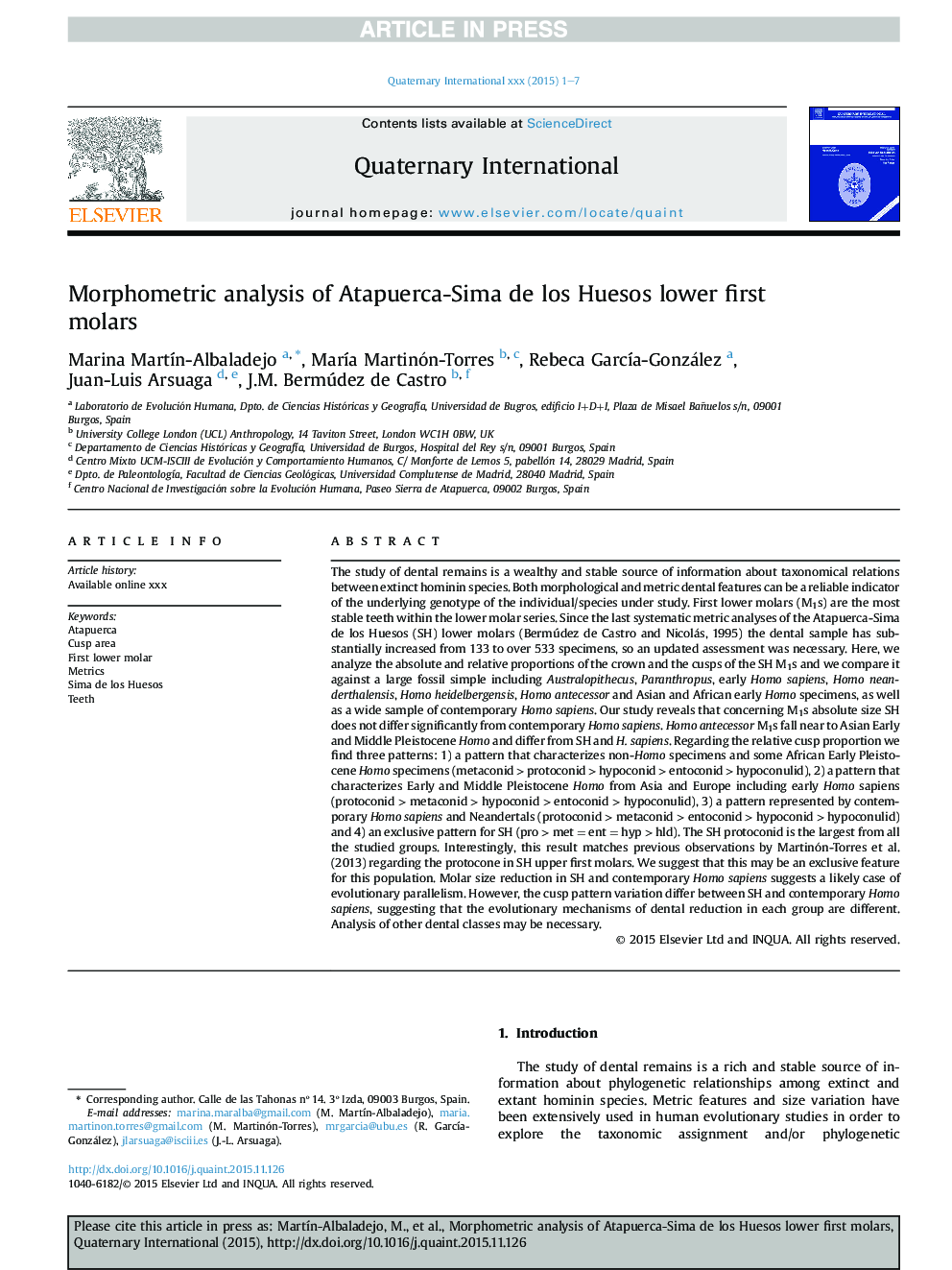| کد مقاله | کد نشریه | سال انتشار | مقاله انگلیسی | نسخه تمام متن |
|---|---|---|---|---|
| 5113661 | 1377944 | 2017 | 7 صفحه PDF | دانلود رایگان |
عنوان انگلیسی مقاله ISI
Morphometric analysis of Atapuerca-Sima de los Huesos lower first molars
دانلود مقاله + سفارش ترجمه
دانلود مقاله ISI انگلیسی
رایگان برای ایرانیان
موضوعات مرتبط
مهندسی و علوم پایه
علوم زمین و سیارات
زمین شناسی
پیش نمایش صفحه اول مقاله

چکیده انگلیسی
The study of dental remains is a wealthy and stable source of information about taxonomical relations between extinct hominin species. Both morphological and metric dental features can be a reliable indicator of the underlying genotype of the individual/species under study. First lower molars (M1s) are the most stable teeth within the lower molar series. Since the last systematic metric analyses of the Atapuerca-Sima de los Huesos (SH) lower molars (Bermúdez de Castro and Nicolás, 1995) the dental sample has substantially increased from 133 to over 533 specimens, so an updated assessment was necessary. Here, we analyze the absolute and relative proportions of the crown and the cusps of the SH M1s and we compare it against a large fossil simple including Australopithecus, Paranthropus, early Homo sapiens, Homo neanderthalensis, Homo heidelbergensis, Homo antecessor and Asian and African early Homo specimens, as well as a wide sample of contemporary Homo sapiens. Our study reveals that concerning M1s absolute size SH does not differ significantly from contemporary Homo sapiens. Homo antecessor M1s fall near to Asian Early and Middle Pleistocene Homo and differ from SH and H. sapiens. Regarding the relative cusp proportion we find three patterns: 1) a pattern that characterizes non-Homo specimens and some African Early Pleistocene Homo specimens (metaconid > protoconid > hypoconid > entoconid > hypoconulid), 2) a pattern that characterizes Early and Middle Pleistocene Homo from Asia and Europe including early Homo sapiens (protoconid > metaconid > hypoconid > entoconid > hypoconulid), 3) a pattern represented by contemporary Homo sapiens and Neandertals (protoconid > metaconid > entoconid > hypoconid > hypoconulid) and 4) an exclusive pattern for SH (pro > met = ent = hyp > hld). The SH protoconid is the largest from all the studied groups. Interestingly, this result matches previous observations by Martinón-Torres et al. (2013) regarding the protocone in SH upper first molars. We suggest that this may be an exclusive feature for this population. Molar size reduction in SH and contemporary Homo sapiens suggests a likely case of evolutionary parallelism. However, the cusp pattern variation differ between SH and contemporary Homo sapiens, suggesting that the evolutionary mechanisms of dental reduction in each group are different. Analysis of other dental classes may be necessary.
ناشر
Database: Elsevier - ScienceDirect (ساینس دایرکت)
Journal: Quaternary International - Volume 433, Part A, 17 March 2017, Pages 156-162
Journal: Quaternary International - Volume 433, Part A, 17 March 2017, Pages 156-162
نویسندگان
Marina MartÃn-Albaladejo, MarÃa Martinón-Torres, Rebeca GarcÃa-González, Juan-Luis Arsuaga, J.M. Bermúdez de Castro,